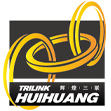Views: 0 Author: Site Editor Publish Time: 2024-06-24 Origin: Site








In the logging industry, safety should always be the top priority. One crucial aspect of ensuring the safety of workers is understanding and implementing proper practices when using harvester bars. Harvester bars are essential tools in heavy logging operations, but their improper use can lead to serious accidents and injuries. Therefore, it is crucial for logging companies and their employees to have a comprehensive understanding of harvester bars and the safety practices associated with their use. This article aims to provide insights into the importance of understanding harvester bars and offers valuable safety practices that should be followed to minimize the risks and promote a safe working environment. By adhering to these guidelines, logging professionals can significantly reduce the likelihood of accidents and create a safer workplace for everyone involved.
Harvester bars play a crucial role in the forestry industry, specifically in the process of harvesting trees. These bars are an essential component of the harvesting equipment used by professionals to efficiently cut down trees and prepare them for processing. In this article, we will delve deeper into the concept of harvester bars, their importance, and how they contribute to the overall efficiency of the logging process.
A harvester bar, also known as a guide bar, is a sturdy steel bar that is attached to a chainsaw or a harvester head. It serves as a guide for the cutting chain and is responsible for directing the chain's movement during tree felling. These bars are designed to withstand high levels of stress and strain, making them durable and long-lasting.
The primary function of a harvester bar is to provide stability and control to the cutting chain. It ensures that the chain remains aligned and in the correct position, allowing for precise cutting. The bar's length and width can vary depending on the specific requirements of the logging operation. Longer bars are commonly used for felling larger trees, while shorter bars are suitable for smaller trees or when working in confined spaces.
One key aspect to consider when selecting a harvester bar is its nose sprocket type. The nose sprocket is responsible for transferring power from the chainsaw or harvester head to the cutting chain. Different nose sprocket types, such as solid or replaceable sprockets, offer varying levels of durability and versatility. It is essential to choose the right type of nose sprocket based on the specific logging needs.
Harvester bars are designed to withstand the harsh conditions of the logging environment. They are exposed to extreme temperatures, heavy loads, and abrasive materials such as dirt and debris. To ensure optimal performance and longevity, regular maintenance and cleaning of the harvester bar are necessary. This includes inspecting the bar for signs of wear or damage and replacing any worn-out components.
Harvester bars are an essential tool in the logging industry, allowing for efficient and effective wood cutting. However, it is crucial to prioritize safety when using these powerful tools. By following certain safety practices, operators can minimize the risk of accidents and ensure a safe working environment.
First and foremost, it is essential to undergo proper training before operating a harvester bar. This includes understanding the equipment, its components, and how to use it safely. Training should cover topics such as operational procedures, maintenance, and emergency protocols. Operators should also be familiar with the manufacturer's guidelines and recommendations for safe use.
One of the primary safety practices when using a harvester bar is wearing appropriate personal protective equipment (PPE). This includes a helmet with a face shield or safety glasses to protect the eyes from flying debris. Additionally, operators should wear hearing protection, as the noise generated by the harvester can be damaging to hearing over time. Sturdy gloves and chainsaw-resistant leg protection are also crucial to prevent injuries.
Regular maintenance of the harvester bar is essential for safe operation. Before each use, operators should inspect the equipment for any signs of damage or wear. This includes checking the chain tension, ensuring it is properly lubricated, and inspecting the guide bar for any cracks or defects. Any damaged or worn components should be replaced immediately to prevent accidents.
When operating the harvester bar, it is crucial to maintain a safe distance from other workers and bystanders. The powerful cutting action of the bar can cause branches or debris to be ejected forcefully, posing a significant risk. Operators should ensure that everyone is at a safe distance and that the work area is clear of obstructions.
Another important safety practice is to be aware of the surrounding environment. Operators should assess the terrain, including slopes, uneven ground, or obstacles that may affect stability. It is crucial to position oneself in a stable and secure location to prevent slips, trips, or falls while operating the harvester bar.
Harvester bars are vital tools in the forestry industry, helping to efficiently fell trees and increase logging productivity. It is crucial to understand their importance and choose the right harvester bar for the job. Safety should always be the top priority when using harvester bars, with proper training, personal protective equipment, regular maintenance, safe distance, and awareness of the surroundings being essential safety practices. By following these guidelines, operators can create a safe working environment and minimize the risk of accidents.
